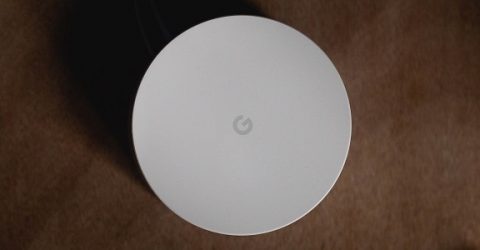Is Google bringing back truly wireless home broadband?
With the latest WiFi6 protocols, the tech giant may be making moves on the broadband market

Back in the heady days of 2000, when anything seemed possible and the future actually looked bright, there was only one method of internet distribution.
You plugged a modem into your home’s telephone socket, dialled into the internet (how primitive it sounds today) and downloaded data at speeds often below 10Kbps.
The breakneck adoption of internet services by both consumers and businesses led to rapid network improvements, and the rollout of broadband connectivity.
By 2010, Google was experimenting with 1Gbps connections to local communities, as part of its Google Fibre project.
However, Google also has a long and inglorious track record of abandoning high-profile projects after a few years. Glass, Google+, Nexus, Desktop, Helpouts…the list goes on.
It came as little surprise when Google Fibre was put on hold in 2016, having made little impact while broadband was rolled out by more established telecommunications firms.
At the time, some industry observers suggested Fibre was a clever attempt to motivate other internet service providers to improve their own line speeds to the benefit of Google users.
However, others suggested Google had simply postponed its entry into the home broadband market. And now, there’s evidence to suggest they’re having another go.
Cable or wireless
Speculation has been sparked by a recent Google request to America’s Federal Communications Commission – effectively their version of Ofcom.
Google has asked to conduct tests over the as-yet unlicenced 6GHz wireless broadband frequency, in a number of locations across America.
Little is known beyond that, as the official request document has been heavily censored.
One thing we do know is that Google intends to test the 6GHz band for its suitability distributing wireless home broadband connectivity.
It’ll be harnessed by the new WiFi 6 protocol, running alongside the familiar 2.4 and 5GHz bandwidths already used by domestic broadband routers.
MoreWhat will 6GHz wifi me for home broadband users?
The radio frequency band between 5925 and 6425MHz has less congestion, transmits data more quickly and offers greater reliability than the congested 2.4GHz band.
Tri-band routers are seen as vitally important in the ongoing evolution of home broadband services, especially given the ever-expanding armies of devices online in our homes.
As such, Google’s experimentation suggests it may be considering returning to the home broadband market.
Could Google be the new BT?
Despite its extremely patchy track record of new innovations, Google would love to provide domestic broadband services.
This would build on the company’s successful range of smartphones, an extensive array of workplace software, the world’s most popular web browser and a widely-adopted OS.
Being able to pipe data into homes using its own high-performance cloud infrastructure would represent something of a coup for the company.
As such, it’ll be interesting to see what announcements (if any) Google makes about its American experiments with wireless home broadband.






